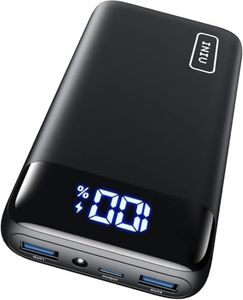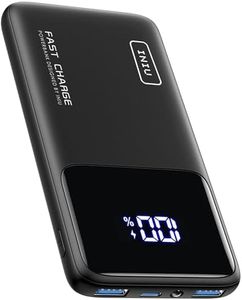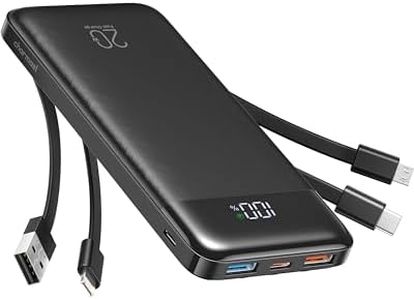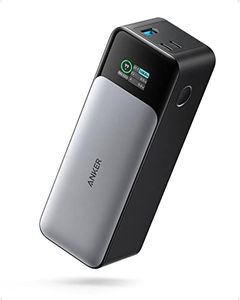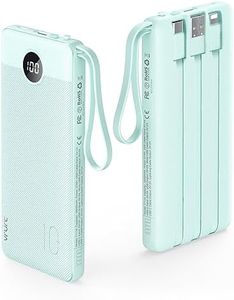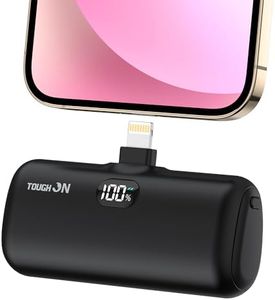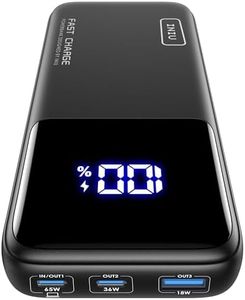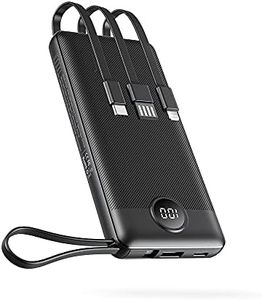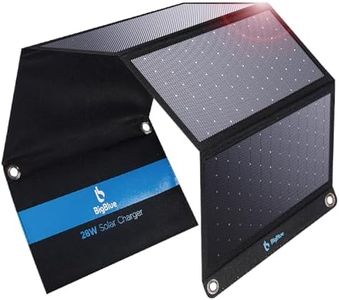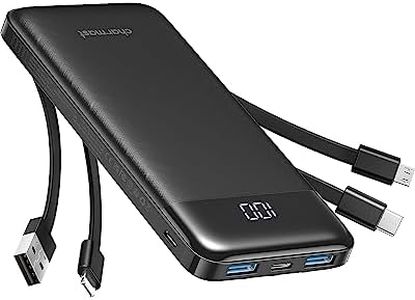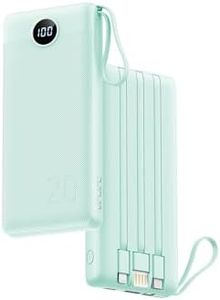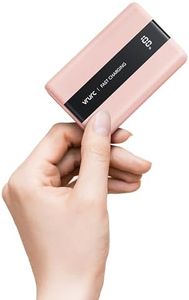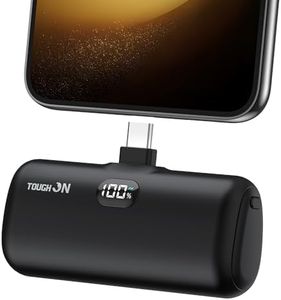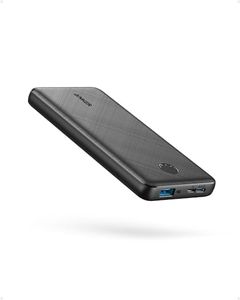We Use CookiesWe use cookies to enhance the security, performance,
functionality and for analytical and promotional activities. By continuing to browse this site you
are agreeing to our privacy policy
10 Best Portable Phone Chargers
From leading brands and best sellers available on the web.Buying Guide for the Best Portable Phone Chargers
When choosing a portable phone charger, also called a power bank, it's important to focus on how you'll use it and what devices you plan to charge. Whether you need something slim for emergencies, robust for trips with no outlets, or multi-port for group charging, clarifying these needs will guide you. Keep an eye on key technical specs, but always reflect on the situations in which you'll rely on your charger so you buy one that fits your habits and travel style.Capacity (mAh)Capacity, measured in milliamp-hours (mAh), tells you how much energy the charger can store and therefore how many times it can recharge your phone. It's important because a higher capacity means more power for your device, but also usually means a bigger and heavier charger. Small capacity chargers (5,000 mAh or less) are ideal for quick top-ups, medium ones (around 10,000 mAh) can typically recharge most phones 1-2 times, and large ones (20,000 mAh or more) can keep phones and even small tablets running for several days. If you only need an emergency backup, go small; for travel or multiple device charges, choose a larger capacity.
Size and WeightThe physical size and weight of the charger will affect how practical it is to carry with you. Slim, lightweight models slip easily into a pocket or purse, making them perfect for everyday use or quick errands. Bulkier chargers, while offering more power, might better suit travel bags or backpacks. Think about where you'll carry your charger and whether portability or capacity matters more to your routine.
Output Ports and Power (Amps and Watts)The number and type of output ports, along with their charging speed (measured in Amps or Watts), determine how fast you can charge your devices and if you can charge more than one at a time. Fast-charging ports deliver higher amperage or wattage for quicker charging, while standard ports are slower. One port is enough for solo use, two or more help when you have multiple devices or are sharing with others. Choose based on your devices' needs and your habit of charging one or many devices at once.
Input Charging TimeInput charging time is how long the power bank itself needs to fully recharge before it’s ready to use again. Devices with higher input wattage or fast recharging features will top up more quickly. If you use your charger often and can’t wait long between uses, get one with fast recharge capability. For occasional users, standard recharge times are usually fine.
Compatibility and Cable TypesCompatibility refers to whether the power bank works smoothly with your particular phone or devices, especially regarding cable types like USB-A, USB-C, or Lightning. Some power banks come with built-in cables or connectors, while others require you to use your own. Make sure the outputs match your device's charging needs—especially if you use a newer phone or want to charge other gadgets like tablets or wireless earbuds.
Safety FeaturesSafety features prevent overcharging, short-circuiting, and overheating, which protect both your devices and the charger itself. Look for mentions of built-in safeguards or certifications. If you plan to leave the power bank charging unattended or use it for expensive devices, prioritizing good safety measures is wise.
